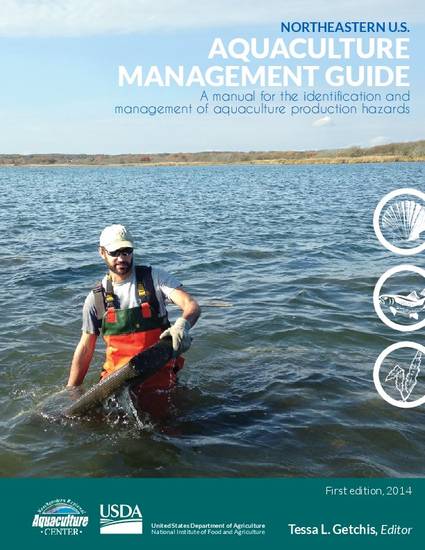
Article
A New Resource to Aid in the Identification and Management of Aquaculture Production Hazards
Journal of Shellfish Research
(2015)
Abstract
Each year, the aquaculture industry experiences significant economic losses as a result of pathogens that cause disease, pests that render product unmarketable, operational mishaps, adverse weather events, and closures of harvest areas due to the presence of organisms with the potential to cause human illness. Collectively, we refer to these as aquaculture production hazards, which present considerable risk to operations. Massive loss of farmed product and human illness caused from ingestion of unknowingly contaminated product both adversely impact profitability, trade, and public perception. The ability of professionals to assist farmers is often limited by a lack of farm-level monitoring, record keeping, and farmer knowledge of hazards and hazard management strategies. Frequently, the causes of mortality events remain unknown or are identified when it is too late to prevent, control, correct or mitigate. Often, key pieces of information are missing from requests to identify and correct the hazard, limiting the response from extension and aquatic animal health professionals. To respond to this problem, a group of extension professionals from universities and industry associations across the northeastern U.S., together with researchers, aquatic animal health professionals, and industry members developed a publication, the Northeast Aquaculture Management Guide that identifies strategies to address aquaculture production hazards. The manual includes science-based information about major production hazards facing farmers, including: predators, diseases, parasites, organisms that have the potential to cause aquatic animal illness and human illness (e.g. toxic algae), biofouling, spread of invasive species, and other operational and environmental hazards. The manual also includes guidelines for environmental monitoring, evaluation and sampling of stocks, record-keeping procedures, and state-by-state contact information for whom to call when a problem occurs. The manual incorporates best management practices and biosecurity measures developed through research and outreach efforts. Improved knowledge of hazards associated with aquaculture production is the first step towards developing or improving risk management strategies. Use of appropriate farm monitoring protocols and record keeping will help aquatic animal health professionals respond better and more efficiently to illness or mortality events. If the causes of such events are identified quickly and definitively, future losses may be minimized or prevented, leading to increased production and profitability. The potential for realized economic benefits is significant; operators who plan proactively to minimize production hazards may have a competitive advantage in the marketplace.
Disciplines
Publication Date
2015
Citation Information
Getchis, Tessa & A. Bouchard, Deborah & Buttner, Joseph & Ewart, John & Faulds, Ann & E. Flimlin, George & Hicks, Doris & Hollingsworth, Craig & Lazur, Andrew & Leavitt, Dale & Mcintosh, Dennis & L. Morse, Dana & Rippen, Tom & Rivara, Gregg & Smolowitz, Roxanna & Terlizzi, Daniel & Webster, Don & Chambers, Michael & Murphy, Diane & Plesha, Nataliya. (2015). A New Resource to Aid in the Identification and Management of Aquaculture Production Hazards. Journal of Shellfish Research. 34. 633-634.
